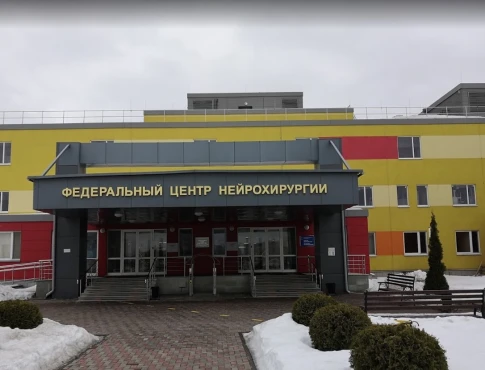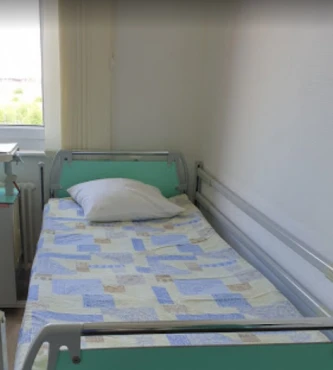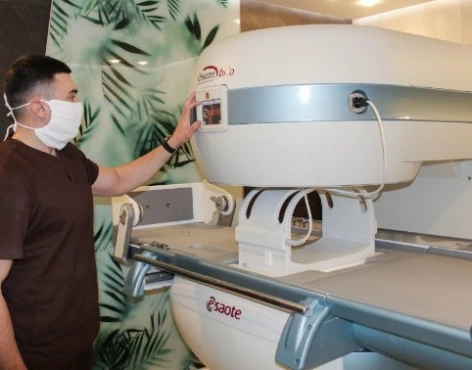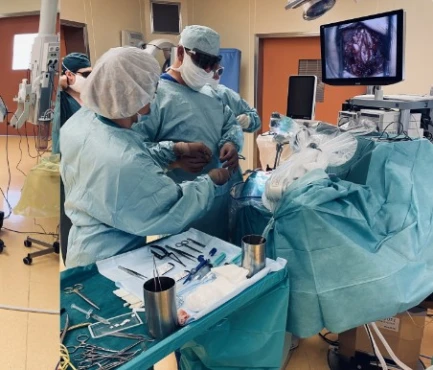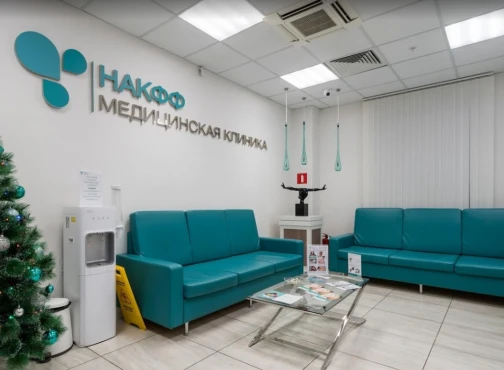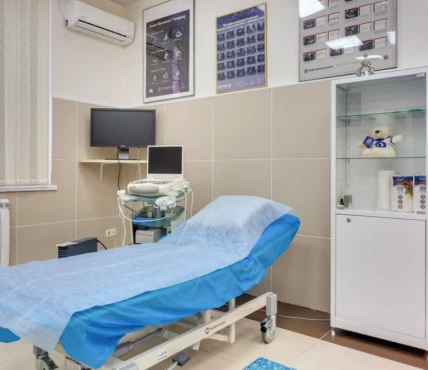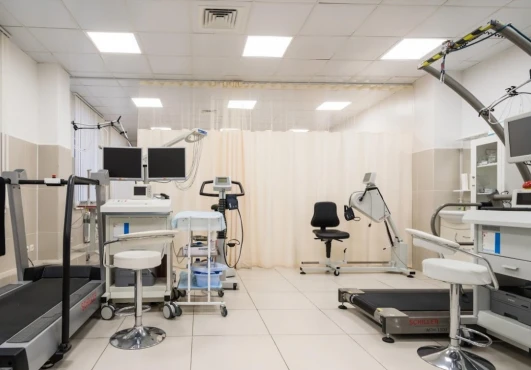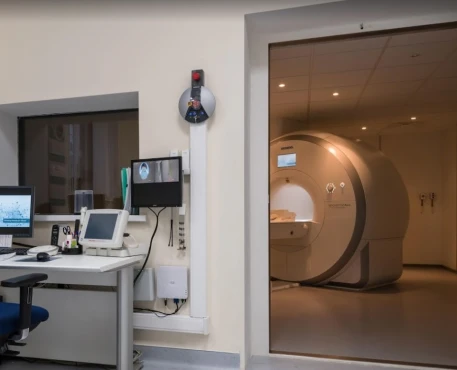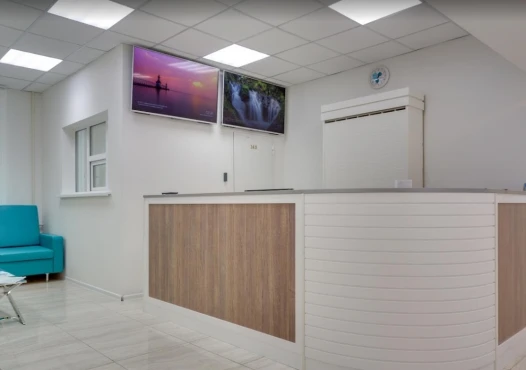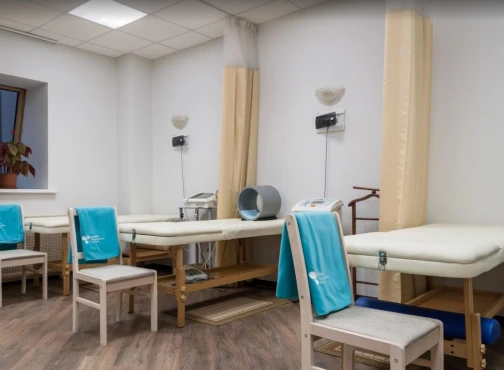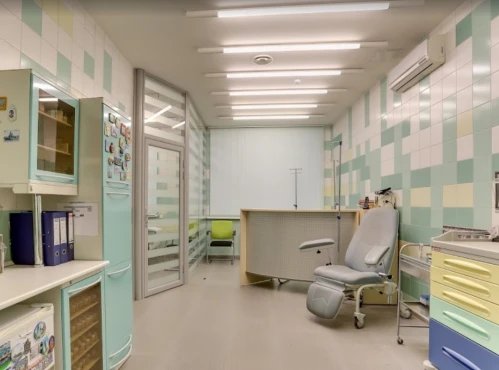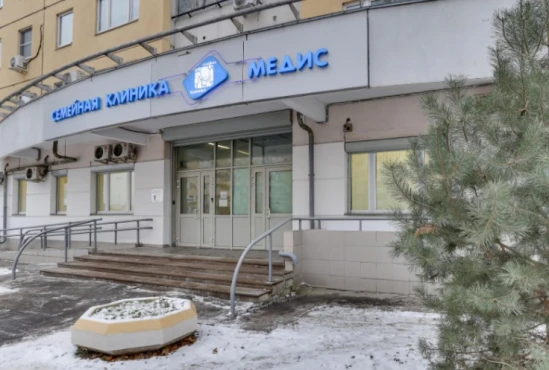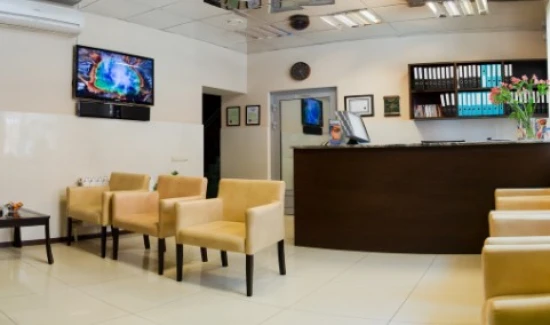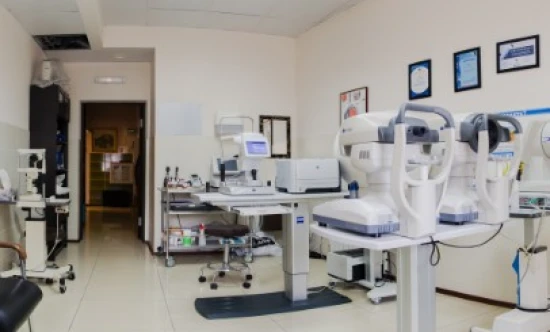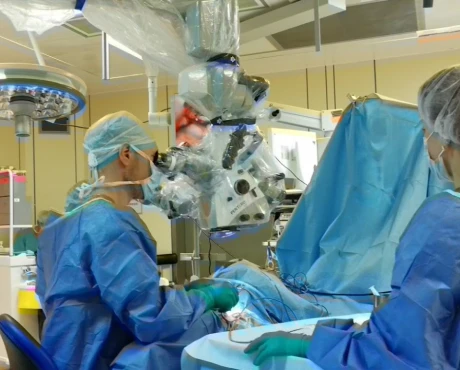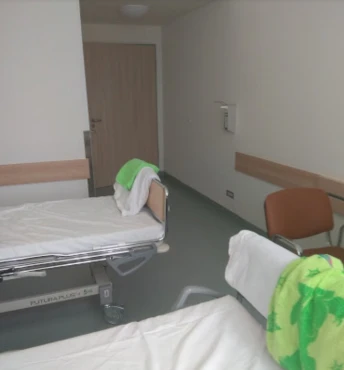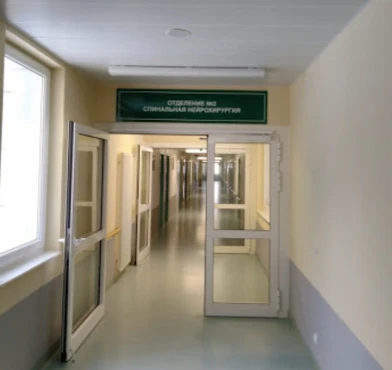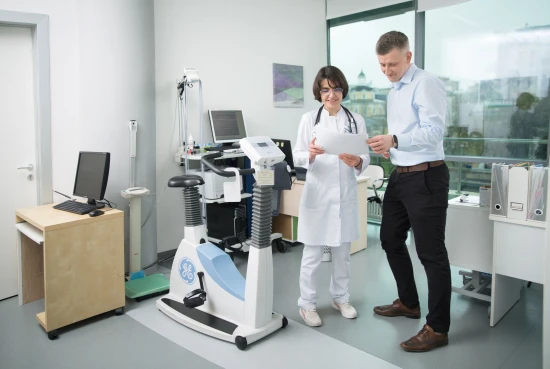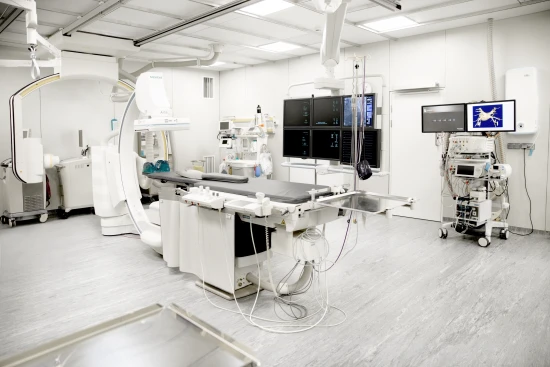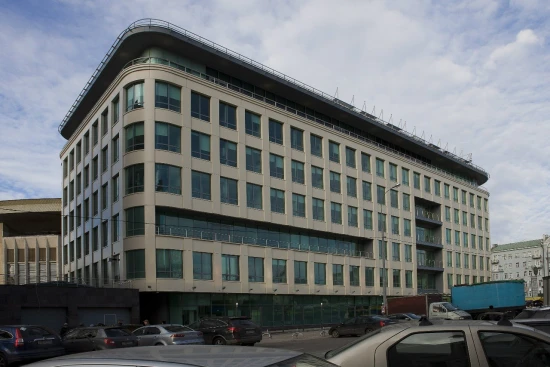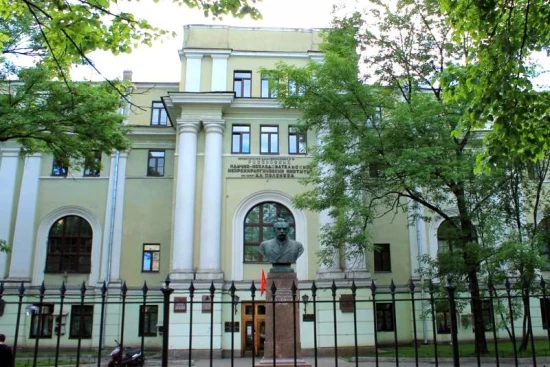Epilepsy treatment in 1 Neurosurgery and Oncology clinic in Tyumen
1 clinic specializing in Neurosurgery and Oncology providing treatment of
Epilepsy
Epilepsy is a neurological disorder characterized by recurrent and unpredictable seizures. It can cause disruptions in daily life, but with proper treatment, many people can manage and control their seizures effectively.
Read more...
disease in Tyumen.
Besides this clinic there are 41 Neurosurgery, Oncology clinics in Russia.
Such diseases are treated by Federal Center for Neurosurgery, Tyumen: Dystonia, Epilepsy, Essential tremor, Obsessive-compulsive disorder (OCD), Parkinson's disease, and others.
-
Deep brain stimulation (DBS)
$22,505
-
Brain aneurysm repair
≈ $7,539
-
Brain aneurysm clipping
$16,121
-
Embolization for cerebral arteriovenous malformation (AVM)
$14,222
-
Microvascular decompression (MVD)
$2,282 - $4,662
-
Arteriovenous malformation (AVM) resection
$13,792
-
Brain tumors surgery
$8,458
-
Endoscopic pituitary surgery
$8,355
-
Cranioplasty
$4,433 - $6,670

Nearby clinics in Russia
Perhaps you should consider the following clinics we have found nearby basing on your Location, Disease filters applied.
-
Deep brain stimulation (DBS)
≈ $12,528
-
Gamma Knife
by request
-
Brain aneurysm repair
≈ $7,539
-
Brain aneurysm clipping
≈ $7,070
-
Microvascular decompression (MVD)
≈ $3,230
-
Arteriovenous malformation (AVM) resection
≈ $6,237
-
Brain tumors surgery
≈ $7,697
-
Peripheral nerve repair
≈ $1,528
-
Nerve decompression surgery
≈ $2,074
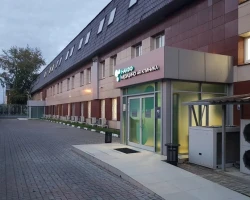
-
Gamma Knife
$2,834 - $5,555
-
Brain aneurysm repair
from $7,936
-
Brain aneurysm clipping
$2,914 - $9,206
-
Microvascular decompression (MVD)
$3,435
-
Arteriovenous malformation (AVM) resection
$3,004 - $5,907
-
Brain tumors surgery
$3,719 - $12,131
-
Peripheral nerve repair
≈ $1,528
-
Nerve decompression surgery
≈ $2,074
-
Surgical neurolysis
≈ $1,103

-
Deep brain stimulation (DBS)
≈ $12,528
-
Epidural block
$907
-
Facet joint injection
$227
-
Radiofrequency rhizotomy
$2,381
-
Pallidotomy
≈ $5,812
-
Intrathecal pain pump
≈ $511
-
Occipital nerve stimulation
≈ $6,700
-
Dorsal root ganglion (DRG) stimulation therapy
≈ $768
-
Sacral nerve stimulation
≈ $3,729

-
Deep brain stimulation (DBS)
≈ $12,528
-
Brain aneurysm repair
≈ $7,539
-
Brain aneurysm clipping
$2,857
-
Microvascular decompression (MVD)
$1,927
-
Arteriovenous malformation (AVM) resection
$2,097 - $2,381
-
Brain tumors surgery
$1,576 - $3,095
-
Peripheral nerve repair
$1,531
-
Nerve decompression surgery
$896
-
Surgical neurolysis
$896

-
Deep brain stimulation (DBS)
$3,576
-
Brain aneurysm repair
from $4,038
-
Brain aneurysm clipping
$3,649 - $11,564
-
Microvascular decompression (MVD)
≈ $3,230
-
Arteriovenous malformation (AVM) resection
$3,649 - $20,576
-
Brain tumors surgery
$4,094 - $24,820
-
Peripheral nerve repair
≈ $1,528
-
Nerve decompression surgery
$2,384 - $4,789
-
Surgical neurolysis
≈ $1,103
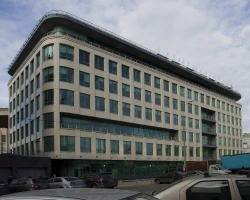
-
Deep brain stimulation (DBS)
$2,551
-
Brain aneurysm clipping
$2,299 - $2,476
-
Microvascular decompression (MVD)
$850
-
Arteriovenous malformation (AVM) resection
$2,299 - $2,653
-
Brain tumors surgery
$1,539 - $2,041
-
Peripheral nerve repair
$884
-
Nerve decompression surgery
$619 - $1,099
-
Endoscopic pituitary surgery
$1,116
-
Embolization for cerebral arteriovenous malformation (AVM)
$726 - $3,571
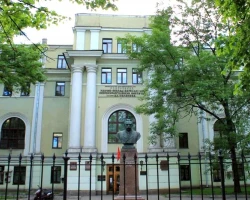
Countries with the highest number of clinics treating the diseases:
Epilepsy:
Related procedures:
Quick navigation
- Brain shunt surgery $3,642 - $6,355
- Corpus callosotomy ≈ $4,867
- Craniofacial surgery ≈ $3,696
- Elevation of depressed skull fracture ≈ $3,699
- Endoscopic septostomy ≈ $2,626
- Extracranial CSF drainage by request
- Focal resection ≈ $3,023
- Functional hemispherectomy ≈ $8,010
- Lumbar puncture ≈ $338
- Multiple subpial transection (MST) ≈ $4,207
- Nerve decompression surgery $1,847 - $4,417
- Ommaya reservoir placement ≈ $2,460
- Peripheral nerve repair $1,847 - $4,417
- Responsive neurostimulation (RNS) insertion ≈ $13,747
- Shunt revision ≈ $3,738
- Temporal lobe resection ≈ $10,273
- Traumatic cerebrospinal fluid leaks surgical repair ≈ $1,196
- Vagus nerve stimulator (VNS) implantation ≈ $1,295
- Bell's palsy
- Brain metastases
- Cavernous angioma
- Cavernous hemangioma
- Cerebral cavernous malformation (CCM)
- Cerebrospinal fluid leak (CSF)
- Craniofacial injury
- Craniopharyngioma
- Glossopharyngeal neuralgia
- Hemifacial spasm
- Hydrocephalus
- Intracranial atherosclerotic stenosis (ICAS)
- Intraventricular tumor
- Moyamoya disease
- Pituitary cyst
- Skull defect
- Skull fracture
- Subarachnoid hemorrhage (SAH)
- Traumatic cerebral spinal fluid leakage
- Trigeminal neuralgia
